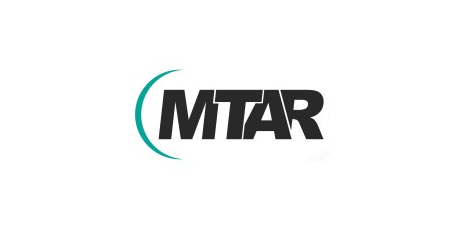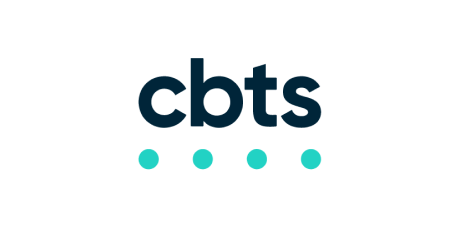Introduction
As companies traverse the intricacies of software development in 2024, selecting the right project delivery model has become increasingly critical. Enter The Dedicated Team Model (DTM)–something that’s stood out as a distinctive approach that’s gained momentum among forward-thinking companies. This analysis will help you evaluate whether DTM aligns with your business goals and organizational capabilities.
Dedicated Team Model, What is it?
A Dedicated Team Model, at its core, represents a strategic collaboration where an outsourcing partner provides a specialized team that exclusively works on your project. Unlike traditional outsourcing arrangements, DTM functions as an extension of your organization, with team members who’re deeply invested in your project’s long-term success and organizational objectives.
How does a Dedicated Team Model work?
The implementation unfolds through four critical phases:
- Strategic Planning:
- Assess technical requirements
- Define team composition needs
- Align project goals and timelines
- Team Construction:
- Select specialists based on technical expertise
- Evaluate cultural fit and communication skills
- Verify experience in relevant domains
- Operational Integration:
- Implement communication protocols
- Setup collaboration tools and workflows
- Establish reporting structures
- Performance Management:
- Client oversight of project direction
- Partner management of administrative aspects
- Regular evaluation and optimization
Strategic Fit Analysis
Optimal Scenarios for DTM
- Innovation-Driven Projects: Initiatives requiring constant evolution and adaptation
- Scaling Requirements: When rapid capacity expansion is essential
- Technical Complexity: Projects demanding specialized expertise in AI Development Services or Cloud-Native Engineering
- Transformation Initiatives: Comprehensive digital transformation or Product Development Service programs
Situations Where DTM May Not Fit
- Defined-scope projects with clear endpoints
- Basic development tasks with minimal complexity
- Organizations lacking project management infrastructure
- Teams requiring minimal guidance
DTM Decision Matrix: Advantages vs. Risks
| Category | Aspect | Key Considerations |
|---|---|---|
| Advantages | Strategic Control |
|
| Resource Optimization |
|
|
| Knowledge Continuity |
|
|
| Risks | Operational Integration |
|
| Initial Resource Investment |
|
|
| Management Requirements |
|
|
| Strategic Commitment |
|
Model Comparison Matrix
While DTM offers clear advantages for certain projects, it’s important to consider it alongside other engagement models. Some organizations might benefit from alternative approaches like outcome-based pricing, which we explored in our previous analysis [“Outcome-Based Pricing in Software Development: A New Paradigm”]. Unlike outcome-based models that tie compensation directly to project success metrics, DTM focuses on building a long-term, integrated relationship. Here’s how these different models compare across key criteria:
| Criteria | Dedicated Team | Fixed Price | Time & Material |
|---|---|---|---|
| Project Length | Extended | Defined | Flexible |
| Adaptability | High | Limited | Moderate |
| Cost Visibility | Moderate | High | Variable |
| Client Oversight | Comprehensive | Minimal | Selective |
| Best Application | Complex, evolving initiatives | Well-defined projects | Moderate complexity tasks |
Implementation Success Strategies
- Communication Framework:
- Structured meeting cadence
- Clear reporting mechanisms
- Collaborative tool utilization
- Performance Standards:
- Defined accountability metrics
- Clear success indicators
- Comprehensive documentation practices
- Team Cohesion:
- Inclusive company activities
- Shared organizational values
- Continuous feedback loops
- Project Governance:
- Agile methodology adoption
- Transparent progress tracking
- Regular performance reviews
Common Challenges
The early phase requires significant effort to synchronize working styles and expectations within the collaborative teams as team members come from different organizational backgrounds.
Communication barriers: Language differences and varying communication styles can impact project efficiency, requiring additional effort to ensure all team members are on the same page.
Cultural differences: Diverse work cultures and varying approaches to problem-solving can create friction in decision-making and collaboration processes, requiring tactful management.
Time zone coordination: Managing work schedules across different time zones can complicate real-time collaboration and extend feedback loops. This requires careful planning of overlapping work hours.
Knowledge transfer processes: Establishing effective systems for sharing project knowledge and maintaining documentation can be complicated, especially when dealing with legacy systems or complex domain knowledge.
Decision Framework
Consider the following questions when evaluating DTM:
- Is your scope likely to evolve significantly over the course of the project?
- Do you need specialized expertise in areas like Product and Platform Engineering?
- Is your organization equipped to manage a remote team?
- Does your budget support a long-term engagement?
- Is team scalability important for your project?
Cost Considerations
The financial aspect of DTM differs significantly from traditional models. While the initial investment might seem higher than fixed-price alternatives, the long-term value often justifies the cost for the following reasons:
- Reduced recruitment and training expenses
- Elimination of infrastructure costs
- Flexibility in resource allocation
- Improved project efficiency over time
- Prevention of knowledge loss
Understanding your budget constraints and expected ROI is crucial when considering DTM. Organizations should factor in both direct costs and the value of increased flexibility and scalability that comes with this model.
Conclusion
The Dedicated Team Model presents a robust solution for organizations undertaking complex, evolving and long-term software development initiatives. While it requires significant commitment in terms of management and resources, the model offers unique advantages in flexibility, expertise access, and long-term value creation.
However, success with DTM depends on careful partner selection and robust management practices. Whether you’re considering Customer Experience (CX) Transformation Services or comprehensive technology initiatives, evaluate your organizational readiness, project requirements, and strategic objectives before committing to this model.
Remember: Effective implementation of DTM requires not just the right model selection, but also a strong commitment to establishing clear processes, maintaining open communication, and fostering genuine collaboration between all stakeholders.







